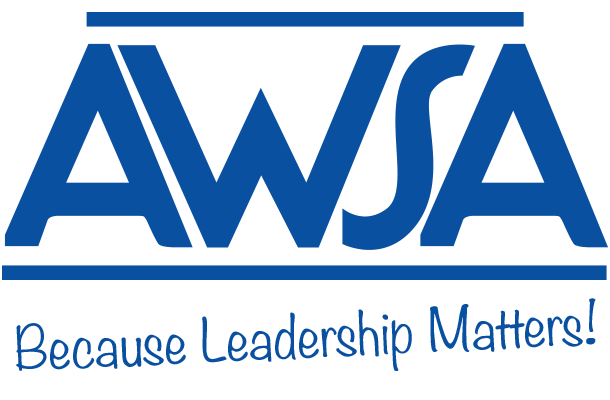Five Budget Provisions That Directly Impact Secondary School Leaders
|
AWSA Update Poll
The k-12 2017-19 education budget has been moved forward and in this weeks Update Bulletin, you'll see a few pieces specifically addressed that may impact principals the most. In this weeks poll, please identify which area will positively impact your current work, focus or priorities the most.
(Click button on left to see poll)
|
The 2017-19 State Budget includes several AWSA/SAA priorities, including a comprehensive package addressing mental health and increasing per-pupil aid by $200 in 2017-18 and $204 in 2018-19. This article highlights five provisions that every school leader should be aware of.
Mental Health:
- The budget includes $3.25 million in total to develop, implement, and administer a program to award grants to school districts for the purpose of collaborating with community mental health providers to deliver mental health services to students.
- Creates a new categorical aid program to support school districts in the provision and expansion of mental health services, by reimbursing school districts for expenditures on social worker services (district employees or contracted services).
- Provides funding to support training opportunities aimed at increasing capacity within school districts to provide mental health screening and intervention Screening, Brief Interventions, and Referral to Treatment (SBIRT), Trauma Sensitive Schools (TSS), and Youth Mental Health First Aid (YMHFA) programs.
- Funding for Medical Assistance benefits was increased by $610,000, including state and federal dollars, beginning in 2018–19 to reflect the estimated cost of providing Medical Assistance reimbursement to clinical consultations involving mental health practitioners and school personnel.
Licensing:
- The new state budget provides for the granting of lifetime licenses to educators after the completion of six semesters of successful experience, as certified by the school board for which each person works.
- The budget also requires the state superintendent to grant a substitute teacher permit to an individual with a two-year degree and substitute teacher training.
- The budget specifies that DPI must simplify teacher licensure, though not decrease quality standards. Specifically, the licensure system be simplified in the following ways:
- (a) simplify the grade levels that licensees are authorized to teach;
- (b) create broad field subject licenses;
- (c) allow school districts to increase the number of teachers by offering internships and residency opportunities;
- (d) create a permit that authorizes an individual who is enrolled in a teacher preparatory program to teach in public schools as part of an internship, residency program, or other equivalent training program;
- (e) simplify licensure reciprocity for individuals who hold a license in another state; and
- (f) expand pathways for individuals who hold a license issued by the DPI to obtain additional licenses to fill positions in geographic areas or subject areas that are in need of educational personnel.
- The budget requires the DPI to grant a license to an individual to provide instruction to pupils enrolled in a Junior Reserve Officer Training Corps (JROTC) program offered in the high school grades if the individual satisfies specific criteria.
Technology:
- Beginning in 2018–19, $9.2 million in new dollars will be provided for “personal education computing devices.” This money can be used by a district in an amount equal to $125 per ninth-grade student to purchase personal electronic computing devices; to purchase software for personal electronic devices; to purchase curriculum, including any related educational content or materials, a portion or all of which includes content that may be accessed on a personal electronic computing device; or to train professional staff on how to incorporate personal electronic devices effectively into the classroom and into the high school curriculum. A “personal electronic computing device” is defined as an electronic computing device that is mobile, that is assignable to an individual pupil to be used solely by that pupil, and that may be used to access the Internet.
Civics Test:
- The state budget increased the score that an individual must achieve on a civics assessment to graduate from high school from 60 points to 65 points.
Early College Credit Program:
- Beginning in the 2018-19 school year, the budget specifies that students can attend a two- or four-year UW institution; a tribally controlled college; or a private, nonprofit institution of higher education located in Wisconsin under a newly created early college credit program. Tuition will not be allowed to exceed 50% of the amount that would be charged to a resident undergraduate student (for courses taken at a public college) or one-third of the amount charged a resident undergraduate student attending UW-Madison (for courses taken at a private college). In addition, it specifies that the current law describing the youth options program would continue to apply to the Wisconsin Technical College System.
Accountability Reports:
- The budget requires the school and district accountability reports that are made public annually by the DPI to include the following information from school districts and for each high school in the district:
- the number and presentation of pupils participating in the early college credit programs,
- the number and percentage of pupils participating in an apprenticeship,
- the number of community service hours completed by pupils,
- the number of advanced placement courses offered,
- the number of advanced placement credits earned by pupils, and
- the number of students who have earned industry-recognized credentials through a technical education program established by a school board.
In the coming weeks, the DPI will publish a full analysis of all of the education-related provisions in the State Budget. AWSA will share this analysis with the membership and follow-up with additional articles, conference sessions, and webinars on the issues of most interest to members.
Read more at:
|

